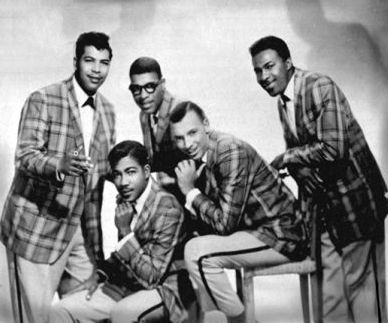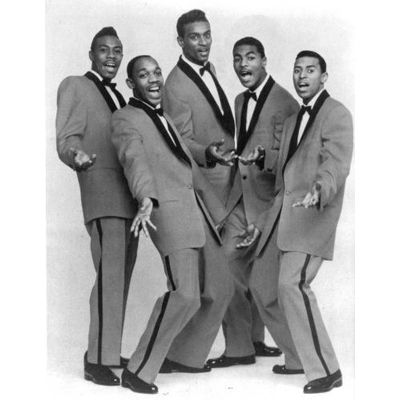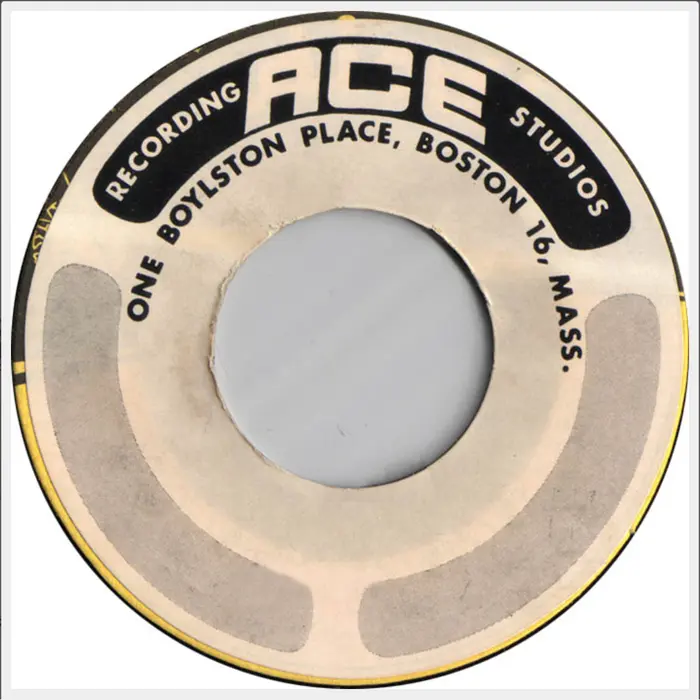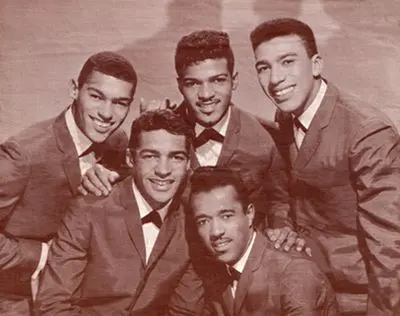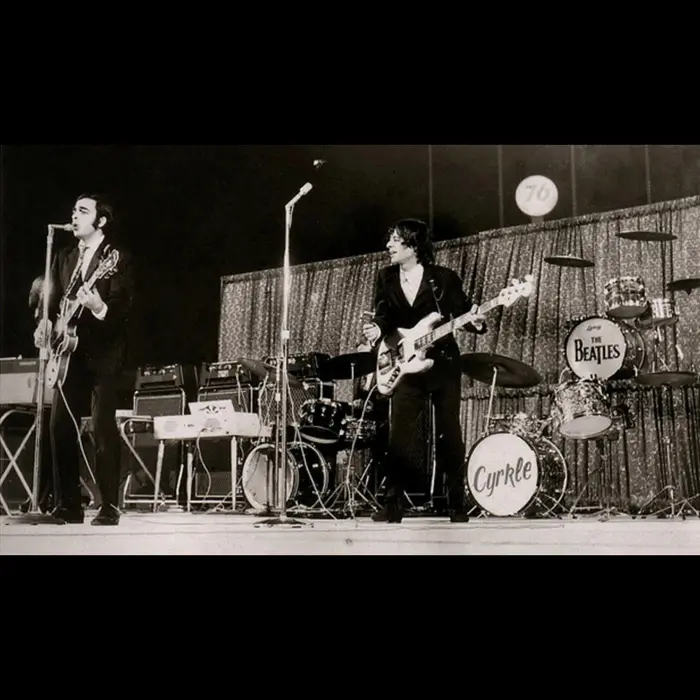The Five Satins
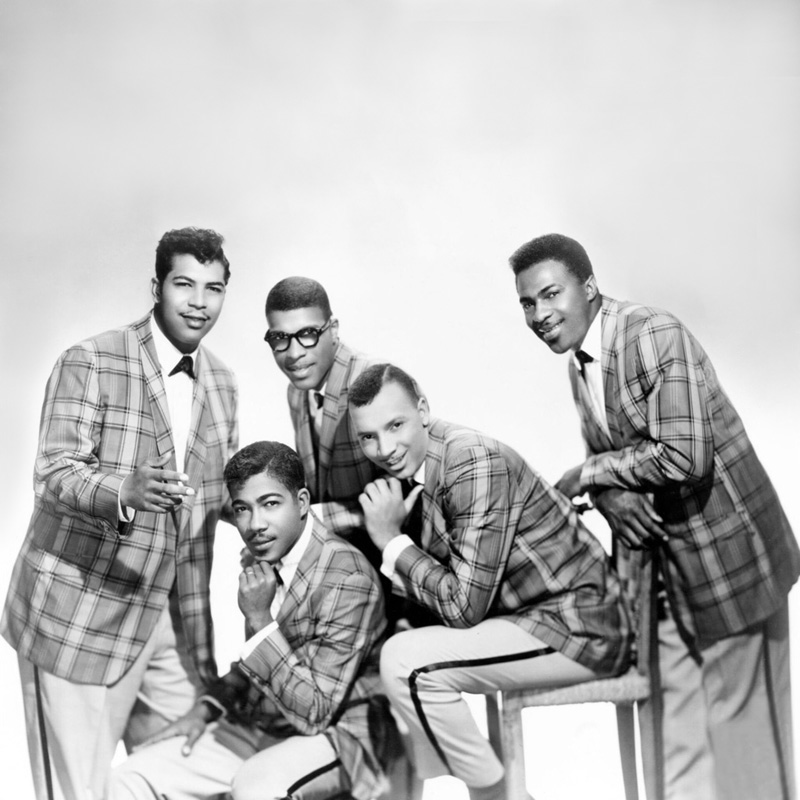
In 1955, vocal quintet The G-Clefs of Roxbury, Massachusetts put New England on the national pop-music map with their single “Ka Ding Dong,” cut at Ace Recording Studios in Boston, when it went to #24 in the Billboard Hot 100 and #9 on the R&B chart – the first from the region to make those lists.
But in 1956, another vocal group from New England recorded a hit that made an infinitely more lasting impression. That group was The Five Satins of New Haven, Connecticut, the hit was “In the Still of the Nite” and it was recorded – as a quartet, even though the group was a quintet – in the basement of a church. While “Ka Ding Dong” fell into the abyss of obscurity years before The Beatles debuted on The Ed Sullivan Show in February 1964, by that time “In the Still of the Nite” was a bona fide pop classic. With estimated sales of over 50 million copies – roughly half that as part of the soundtrack for the 1987 film Dirty Dancing – it’s safe to assume that “In the Still of the Nite” is the overwhelming reason why The Five Satins have been inducted into the Rhythm & Blues Foundation Hall of Fame (in 1998) and the Vocal Group Hall of Fame (in 2003) and The G-Clefs have not.
Formation, Early performances
Formed in 1954, the group was originally a sextet consisting of 17-year old Fred Parris – whose previous band, The Scarlets, had recorded the local hit “Dear One” that same year – and five of his Hillhouse High School classmates: Lewis Peeples, Stanley Dortche, Ed Martin, Jim Freeman and Nat Mosley. Peeples and Dortche soon left, Al Denby joined and the quintet that achieved international doo-wop immortality was born.
Long before they played clubs like The Apollo in Harlem and shared bills with Little Richard, The Platters and others, they were one of the many groups that sang on the corner of New Haven’s Dixwell Avenue and Webster Street or at the Dixwell Community House before touring on the Chitlin’ Circuit.
“In the Still of the Nite” Inspiration, Recording
Parris, who wrote “In the Still of the Nite” while serving in the Army, said the song was inspired by his meeting “the girl of my dreams” at the Savin Rock Amusement Park in West Haven and that he came up with the lyrics and the tune while on the train going back to his base in Philadelphia after visiting her. “When I arrived at camp, I went straight to the day room,” he said in an interview with Smithsonian magazine in 2004. “There was a piano there, and I started playing the chord in my head and the words in my heart.”
On February 19, 1956, when Parris was in New Haven on leave, the group recorded the song as a quartet, Parris told Bob Belniak, publisher of the New England Doo Wop Society’s Echoes of the Past magazine – Parris, Freeman, Martin and Denby – in a makeshift studio in the basement of St. Bernadette’s Catholic Church on Townsend Avenue with Curlee Glover (piano), Doug Murray (bass), Bobby Mapp (drums) and Vinny Mazzetta (saxophone) and producer Marty Kugell behind a two-track machine.
Asked in a 2013 on the radio show Doo Wop Revival why he thought the resulting acoustics were so perfect, Parris offered a spiritual explanation: “Because we did it at the church,” he said. “I think the song was blessed. And so was I.”
Local/National Chart Positions, American Bandstand, Dirty Dancing
Parris used the spelling “Nite” to avoid confusion with Cole Porter’s “In the Still of the Night” (written in 1937) and the song – sometimes written as “”(I Remember) the Still of the Nite” or “…Night” – was released in the spring of 1956 on producer Kugell’s label Standord Records, then by New York-based Ember Records after it became a local smash. Soon it was the #1 listener-requested song on pioneering deejay Alan Freed’s nightly show on WINS in New York, Freed often playing it as the closing track.
In November 1956, it peaked at #24 in the Billboard Hot 100 and #3 on the R&B chart and for the next 30 years the song was almost always #1 in New York oldies station WCBS-FM’s Top 500 Songs countdown while The Five Satins became regulars on American Bandstand. In 1960 and 1961, the song made the Hot 100 again – #81 and #99, respectively – and it’s one of only two non-Christmas tunes to have reached that chart on three separate occasions by the same artist doing the same version (the other being Bobby “Boris” Pickett and the Crypt-Kickers’ 1962 hit “Monster Mash”).
Often cited as the origin of the term “doo wop” for its “doo wop, doo wah” bridge, in 1987 “In the Still of the Nite” appeared on the soundtrack of the film Dirty Dancing – which sold 32 million copies – and it’s been recorded by Paul Anka (1969), The Beach Boys (1976), Ronnie Milsap (1986) and Boyz II Men (1993), among others.
Lineup changes, “To the Aisle”, Fred Parris and The Scarletts
Unfortunately for Parris, he was thousands of miles from home as the song scaled the US charts, having been stationed in Japan since shortly after recording it. In his absence, original Five Satins Martin and Freeman teamed with Tommy Killebrew, Jessie Murphy and lead vocalist Bill Baker to record “To the Aisle,” which charted nearly as well as “In the Still of the Nite,” reaching #25 in the Billboard Hot 100 and #5 in the R&B ranking.
Upon his return to New Haven from Japan in 1958, Parris changed the lineup himself, bringing back original member Peeples (to replace Denby, who was in Germany serving in the Army) and adding Richie Freeman, Sylvester Hopkins and West Forbes under the name Fred Parris and The Scarlets since the Bill Baker-led quintet was calling themselves The Five Satins and Parris had no legal right to the name.
Other charting songs, Fred Parris and the Restless Heart
At the end of 1958, the Baker-fronted group broke up and Parris reclaimed the name The Five Satins, recording five charting tracks over the next four years: “When Your Love Comes Along” (1958, #112), “Shadows” (1959, #87), “I’ll Be Seeing You”(1960, #22), “Your Memory” (1960, #107) and “The Masquerade Is Over” (1962, #102).
In 1965, he renamed the band Fred Parris and the Restless Heart and for the next eight years they appeared at oldies revues across the US and Europe with various lineups, and recording only occasionally.
American Graffiti, Oldies revival, Don Kirshner, Medley Craze
In 1973, the hit film American Graffiti and its nostalgic soundtrack, which included “In the Still of the Nite,” sparked renewed interest in oldies, prompting promoter Don Kirshner to sign Parris and his group to his Kirshner label – under the name The Five Satins – to record two singles, “Very Precious Oldies” and “Two Different Worlds.” Both flopped, but when the group recorded “Everybody Stand Up and Clap Your Hands (For the Entertainer)” under the name Black Satin for Buddah Records in 1976, it went to #50 in the R&B chart.
In 1982, driven by a medley craze that had consumed Top-40 radio, Connecticut-based producer Marty Markiewicz, a longtime friend of Parris’ working for Elektra, produced the group’s first song to make the Hot 100 since 1960, “Memories of Days Gone By,” which peaked at #71. Elektra execs greenlit a full album, released as Fred Parris and the Satins, and the single “Didn’t I (Blow Your Mind This Time),” a cover of the Delfonics’ 1970s hit, saw solid airplay in New Haven but failed to reach national charts. Various iterations of the group continued to perform through 2021.
Accolades, Later Activity, Deaths
In 1998, The Five Satins were inducted into the Rhythm & Blues Foundation Hall of Fame, in 2001 the Recording Industry Association of America and the National Endowment for the Arts named “In the Still of the Nite” one of the “Songs of the Century” and in 2010 Rolling Stone ranked it #90 in its “Top 500 Greatest Songs of All Time” list.
Of the surviving most regular Satins – which had roughly 20 members over the decades – Richie Freeman became the sound engineer at Iridium Jazz Club in New York, Jim Freeman opened a pest-control company in Iowa, Martin spent five years performing in Canada before exiting the music business and returning to New Haven and Forbes worked at Alliant International University in San Diego. Baker died in 1994 at age 58 followed by Dortche in 2010 at 73, Peeples in 2020 at 83 and Parris in 2022 at 85.
“I never stopped loving doing that song…”
Speaking to The New York Times in January 2022, former editor of R&B history magazine Bim Bam Boom Ralph Newman said Parris never saw performing “In the Still of the Nite” as a burden. “I asked Fred whether he ever tired of singing that song, night after night, year after year,” he said, “to which he replied: ‘No way. I never stop loving doing that song for people who tell me that it occupies a special place in their lives. I consider it a privilege.’”
(by D.S. Monahan)

